Hydraulic calculation of the heating system on a specific example
Heating based on hot water circulation is the most common option for arranging a private house. For competent system design, it is necessary to have preliminary analysis results, the so-called hydraulic calculation of the heating system, linking the pressure in all sections of the network with the pipe diameters.
The presented article describes in detail the calculation technique. To better understand the algorithm of actions, we examined the calculation procedure using a specific example.
Adhering to the described sequence, it will be possible to determine the optimal diameter of the main, the number of heating devices, boiler power and other system parameters necessary for arranging an effective individual heat supply.
The content of the article:
The concept of hydraulic calculation
The determining factor in the technological development of heating systems has become the usual energy savings. The desire to save money makes a more careful approach to the design, selection of materials, methods of installation and operation of heating for the home.
Therefore, if you decide to create a unique and primarily economical heating system for your apartment or home, then we recommend that you familiarize yourself with the rules of calculation and design.
Before defining the hydraulic calculation of the system, you need to clearly and clearly understand that the individual heating system of an apartment and a house is located conditionally an order of magnitude higher relative to the central heating system of a large building.
A personal heating system is based on a fundamentally different approach to the concepts of heat and energy.
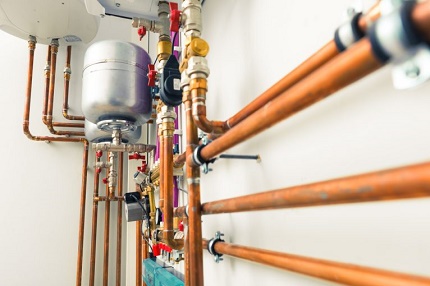
It is enough to carry out a trivial comparison of these systems according to the following parameters.
- The central heating system (boiler-house-apartment) is based on standard types of energy - coal, gas. In an autonomous system, you can use almost any substance that has a high specific heat of combustion, or a combination of several liquid, solid, granular materials.
- DSP is built on conventional elements: metal pipes, “clumsy” batteries, shutoff valves. An individual heating system allows you to combine a variety of elements: multi-section radiators with good heat dissipation, high-tech thermostats, different types of pipes (PVC and copper), faucets, plugs, fittings and of course their own more economical boilers, circulation pumps.
- If you go into the apartment of a typical panel house built about 20-40 years ago, we see that the heating system comes down to the presence of a 7-cell battery under the window in each room of the apartment plus a vertical pipe through the entire house (riser), with which you can "communicate" with neighbors above / below. Whether it’s an autonomous heating system (ASO), it allows you to build a system of any complexity, taking into account the individual wishes of the residents of the apartment.
- Unlike DSP, a separate heating system takes into account a rather impressive list of parameters that affect the transmission, energy consumption and heat loss. The temperature regime of the environment, the required temperature range in the premises, the area and volume of the room, the number of windows and doors, the purpose of the premises, etc.
Thus, the hydraulic calculation of the heating system (GRSO) is a conditional set of calculated characteristics of the heating system, which provides comprehensive information about parameters such as pipe diameter, number of radiators and valves.
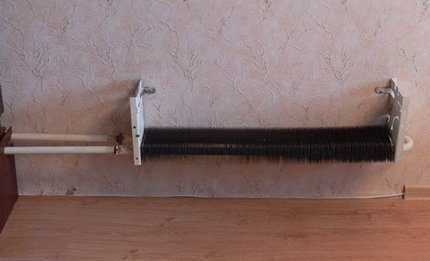
GRSO allows you to choose the right ring water pump (heating boiler) for transporting hot water to the final elements of the heating system (radiators) and, in the end, have the most balanced system, which directly affects financial investments in the heating of the home.
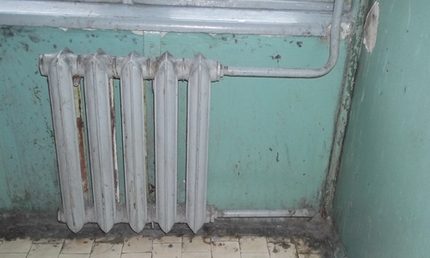
Sequence of calculation steps
Speaking about the calculation of the heating system, we note that this procedure is the most ambiguous and important in terms of design.
Before performing the calculation, you need to make a preliminary analysis of the future system, for example:
- set the heat balance in all and specifically each room of the apartment;
- select thermostats, valves and pressure regulators;
- identify areas of the system with maximum and minimum consumption of heat carrier.
In addition, it is necessary to determine the general transportation scheme of the coolant: full and small circuit, single pipe system or two-pipe highway.
As a result of the hydraulic calculation, we obtain several important characteristics of the hydraulic system that provide answers to the following questions:
- what should be the power of the heating source;
- what is the flow rate and speed of the coolant;
- what diameter of the main pipeline of the heat pipeline is needed;
- what are the possible losses of heat and the mass of the coolant itself.
Another important aspect of hydraulic calculation is the procedure of balance (linking) of all parts (branches) of the system during extreme thermal conditions with the help of control devices.
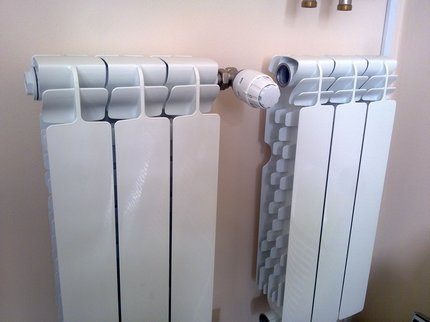
The settlement area of the pipeline is a section with a constant diameter of the pipeline itself, as well as an unchanged flow of hot water, which is determined by the formula of the heat balance of the rooms. The listing of design zones starts from a pump or heat source.
Initial conditions of the example
For a more specific explanation of all the details of the hydraulic miscalculation, we take a concrete example of a conventional housing. In stock we have a classic 2-room apartment of a panel house with a total area of 65.54 m2, which includes two rooms, a kitchen, separate toilet and bathroom, double corridor, twin balcony.
After putting into operation, we received the following information regarding the readiness of the apartment. The described apartment includes putty and primed walls made of monolithic reinforced concrete structures, profile windows with two chamber glasses, tyrse-pressed interior doors, and ceramic tiles on the bathroom floor.
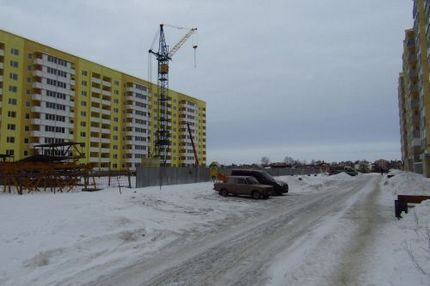
In addition, the presented housing is already equipped with copper wiring, dispensers and a separate flap, gas stove, bath, washbasin, toilet, heated towel rail, sink.
And most importantly, the living rooms, bathroom and kitchen already have aluminum heating radiators. The question regarding pipes and the boiler remains open.
How data is collected
The hydraulic calculation of the system is for the most part based on calculations related to the calculation of heating over the area of the room.
Therefore, you must have the following information:
- the area of each individual room;
- dimensions of window and door connectors (internal doors have almost no effect on heat loss);
- climatic conditions, features of the region.
We will proceed from the following data. The area of the common room is 18.83 m2, bedroom - 14.86 m2, kitchen - 10.46 m2, balcony - 7.83 m2 (amount), corridor - 9.72 m2 (amount), bathroom - 3.60 m2, toilet - 1.5 m2. Entrance doors - 2.20 m2, window display of the common room - 8.1 m2, bedroom window - 1.96 m2, kitchen window - 1.96 m2.
The height of the walls of the apartment is 2 meters 70 cm. The external walls are made of concrete of class B7 plus internal plaster, 300 mm thick.Internal walls and partitions - bearing 120 mm, ordinary - 80 mm. Floor and, accordingly, ceiling of concrete slabs of class B15, thickness 200 mm.

What about the environment? The apartment is in the house, which is located in the middle of a small town microdistrict. The city is located in a certain lowland, the height above sea level is 130-150 m. The climate is temperate continental with cool winters and fairly warm summers.
The average annual temperature, + 7.6 ° C. The average January temperature is -6.6 ° C, July + 18.7 ° C. Wind - 3.5 m / s, average humidity - 74%, rainfall 569 mm.
Analyzing the climatic conditions of the region, it should be noted that we are dealing with a wide range of temperatures, which in turn affects the special requirement for adjusting the heating system of the apartment.
Heat generator power
One of the main components of the heating system is a boiler: electric, gas, combined - at this stage it does not matter. Since its main characteristic is important to us - power, that is, the amount of energy per unit of time that will be spent on heating.
The power of the boiler itself is determined by the formula below:
W boiler = (S room * W business) / 10,
Where:
- Sroom - the sum of the areas of all rooms that require heating;
- Did - specific power, taking into account the climatic conditions of the location (that is why it was necessary to know the climate of the region).
What is characteristic, for different climatic zones we have the following data:
- northern areas - 1.5 - 2 kW / m2;
- central zone - 1 - 1.5 kW / m2;
- southern regions - 0.6 - 1 kW / m2.
These figures are rather arbitrary, but nevertheless give a clear numerical answer regarding the environmental impact on the heating system of the apartment.

The sum of the area of the apartment that needs to be heated is equal to the total area of the apartment and is equal to, that is, 65.54-1.80-6.03 = 57.71 m2 (minus the balcony). The specific power of the boiler for the central region with cold winters is 1.4 kW / m2. Thus, in our example, the calculated power of the heating boiler is equivalent to 8.08 kW.
Dynamic fluid parameters
We proceed to the next stage of calculations - analysis of coolant consumption. In most cases, the heating system of an apartment differs from other systems - this is due to the number of heating panels and the length of the pipeline. Pressure is used as an additional “driving force” of the flow vertically through the system.
In private single- and multi-storey buildings, old panel-type apartment buildings, high-pressure heating systems are used, which allows transporting heat-releasing substance to all sections of a branched, multi-ring heating system and raising water to the entire height (up to the 14th floor) of the building.
On the contrary, an ordinary 2- or 3-room apartment with independent heating does not have such a variety of rings and branches of the system, it includes no more than three circuits.
This means that the coolant is transported using the natural process of water flow. But you can also use circulation pumps, heating is provided by a gas / electric boiler.

Specialists in the design and installation of heating systems determine two main approaches in terms of calculating the volume of coolant:
- According to the actual capacity of the system. All volumes of cavities, without exception, where the flow of hot water will flow are summed up: the sum of individual sections of pipes, sections of radiators, etc. But this is a rather time-consuming option.
- By boiler power. Here, the opinions of experts diverged very much, some say 10, others 15 liters per unit capacity of the boiler.
From a pragmatic point of view, it is necessary to take into account the fact that the heating system will probably not only supply hot water for the room, but also heat the water for the bath / shower, washbasin, sink and dryer, and maybe also for a hydromassage or jacuzzi. This option is simpler.
Therefore, in this case, we recommend installing 13.5 liters per unit of power. Multiplying this number by the boiler power (8.08 kW), we get the calculated volume of water mass - 109.08 liters.
The calculated velocity of the coolant in the system is precisely that parameter that allows you to select a specific pipe diameter for the heating system.
It is calculated by the following formula:
V = (0.86 * W * k) / t-to,
Where:
- W - boiler power;
- t - temperature of the supplied water;
- to - water temperature in the return circuit;
- k - boiler efficiency (0.95 for gas boiler).
Substituting the calculated data in the formula, we have: (0.86 * 8080 * 0.95) / 80-60 = 6601.36 / 20 = 330kg / h. Thus, in one hour, 330 l of coolant (water) moves in the system, and the capacity of the system is about 110 l.
Pipe diameter determination
For the final determination of the diameter and thickness of the heating pipes, it remains to discuss the issue of heat loss.
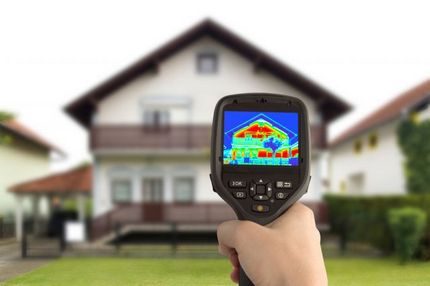
There are several types of heat loss in heated rooms:
- Pipe pressure loss. This parameter is directly proportional to the product of the specific friction loss inside the pipe (provided by the manufacturer) by the total pipe length. But given the current task, such losses can be ignored.
- Head loss at local pipe resistances - Heat costs on fittings and inside equipment. But given the conditions of the problem, a small number of fitting bends and the number of radiators, such losses can be neglected.
- Heat losses based on the location of the apartment. There is another type of heat costs, but they are more related to the location of the room relative to the rest of the building. For an ordinary apartment, which is located in the middle of the house and adjacent to the left / right / top / bottom with other apartments, the heat loss through the side walls, ceiling and floor is practically equal to “0”.
You can only take into account losses through the front of the apartment - a balcony and the central window of the common room. But this question is being closed due to the addition of 2-3 sections to each of the radiators.
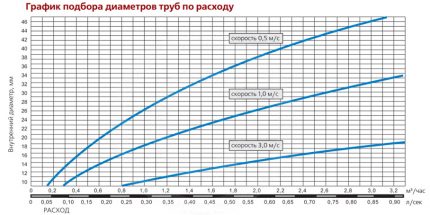
Analyzing the above information, it is worth noting that for the calculated speed of hot water in the heating system, the tabular velocity of movement of water particles relative to the pipe wall in a horizontal position of 0.3-0.7 m / s is known.
To help the master, we present the so-called checklist of calculations for a typical hydraulic calculation of a heating system:
- data collection and calculation of boiler power;
- volume and speed of the heat carrier;
- heat loss and pipe diameter.
Sometimes when miscalculating, you can get a sufficiently large pipe diameter to block the calculated volume of the coolant. This problem can be solved by increasing the boiler displacement or by adding an additional expansion tank.
On our site there is a block of articles devoted to the calculation of the heating system, we advise you to read:
- Thermal calculation of a heating system: how to correctly calculate the load on a system
- Calculation of water heating: formulas, rules, examples of implementation
- Thermotechnical calculation of a building: specifics and formulas for performing calculations + practical examples
Conclusions and useful video on the topic
Features, advantages and disadvantages of natural and forced circulation systems for the heating medium:
Summing up the hydraulic calculation, as a result, we obtained specific physical characteristics of the future heating system.
Naturally, this is a simplified calculation scheme, which gives approximate data on the hydraulic calculation for the heating system of a typical two-room apartment.
Trying to independently carry out a hydraulic calculation of the heating system? Or maybe they do not agree with the stated material? We look forward to your comments and questions - the feedback block is located below.

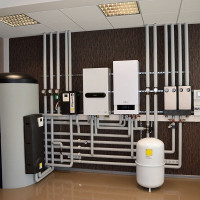 Thermal calculation of a heating system: how to correctly calculate the load on a system
Thermal calculation of a heating system: how to correctly calculate the load on a system 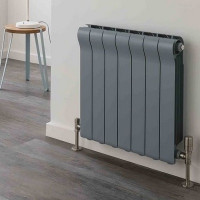 Calculation of a single-pipe heating system: what to consider when calculating + practically an example
Calculation of a single-pipe heating system: what to consider when calculating + practically an example  Calculation of the heating system of a private house: rules and examples of calculation
Calculation of the heating system of a private house: rules and examples of calculation  Calculation of water heating: formulas, rules, examples of implementation
Calculation of water heating: formulas, rules, examples of implementation  Calculation of air heating: basic principles + calculation example
Calculation of air heating: basic principles + calculation example 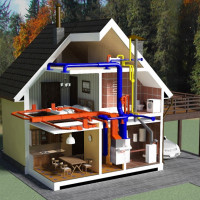 Cottage heating: schemes and nuances of organizing an autonomous heating system
Cottage heating: schemes and nuances of organizing an autonomous heating system  How much does it cost to connect gas to a private house: the price of organizing gas supply
How much does it cost to connect gas to a private house: the price of organizing gas supply  The best washing machines with dryer: model rating and customer tips
The best washing machines with dryer: model rating and customer tips  What is the color temperature of light and the nuances of choosing the temperature of the lamps to suit your needs
What is the color temperature of light and the nuances of choosing the temperature of the lamps to suit your needs  Replacement of a geyser in an apartment: replacement paperwork + basic norms and requirements
Replacement of a geyser in an apartment: replacement paperwork + basic norms and requirements